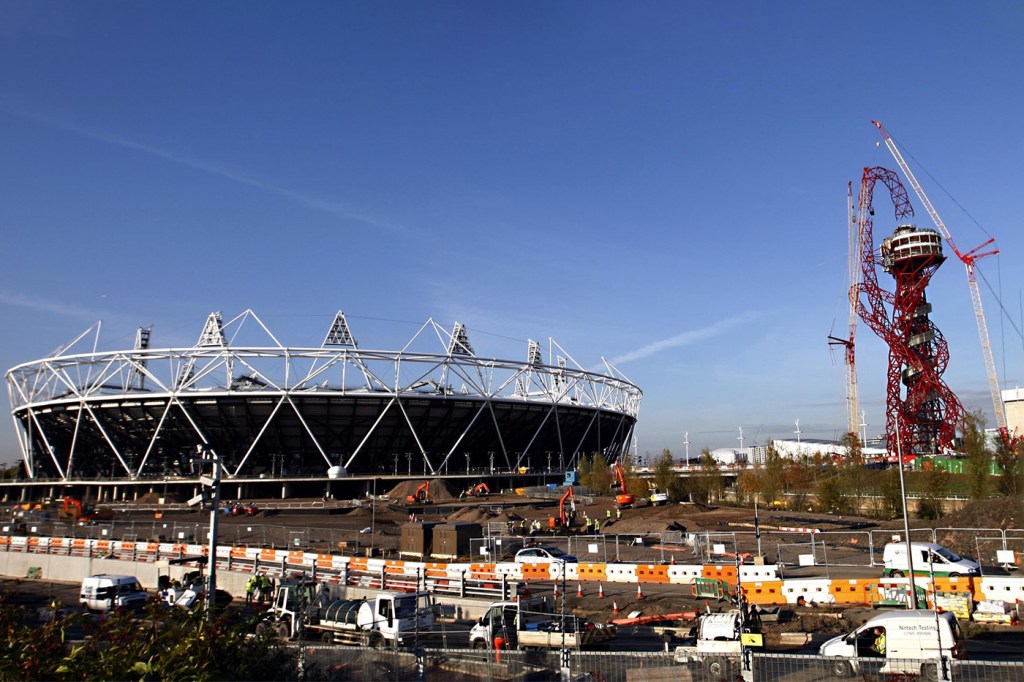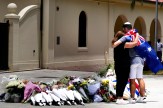From London to Paris: What the 2012 Olympics can teach us about urban transformation
Northeastern historian Olly Ayers and urban political expert John Ackerman analyze whether the Games were successful in transforming a de-industrialised area of the U.K. capital.

LONDON — Parisians were shocked in 2005 when it was announced that London, their historic rival on the other side of the English Channel, had beaten them in the bid to host the 2012 Olympics.
Almost 20 years later, the City of Light will finally get its chance to dazzle on the world stage when the French capital kicks off the Games on Friday in what organizers hope will be the “greenest ever.”
But are there lessons to be learned from the experience across the water? The 2012 Olympics transformed parts of east London with public and private investment flooding into the area of Stratford. It went from a forgotten de-industrialized outpost into a shopping and residential mecca.
In 2021, Stratford station — partly as a quirk of changed travel patterns during the pandemic — became the busiest in Britain. It is certainly not just an outpost any more.
Olly Ayers, an associate professor in history at Northeastern University in London, says Stratford was formerly a manufacturing center that went into decline after World War II due to a mixture of factors, including the “big force of globalization” that made it cheaper to produce goods in developing countries.
“All kinds of local, national and global forces collided, which meant, for somewhere like Stratford, there were still people living there but its reason for being was not quite the same,” Ayers says.
Ken Livingstone, the mayor of London at the time of the city’s bid, was said to have become “fixated” by the idea of using the Olympics to regenerate the area.
There was an aspiration to use the Olympics in a different way than the Olympic Games often had been.
John Ackerman, an assistant professor in politics and international relations at Northeastern
Desire to build a legacy into the Games
Along with that motivation, there was also a desire to build a legacy from the Games, says Ayers, to ensure it would benefit the neighborhood for decades.
“It was one of the big promises of that Olympic bid, that this would be a kind of proper sustainable Olympics with a legacy,” Ayers explains.
“This question about the legacy of hosting an Olympics wasn’t new. The London bid tried to tackle that head-on. The tagline was: ‘Inspire a generation.’ When they went to do the final lobbying, they took David Beckham and a load of kids over, saying, ‘These are the examples of people we are going to inspire.’
“I think that had a big sway with the International Olympic Committee, but there were also some local promises made about regenerating east London.”
After London was selected for 2012, Stratford soon started its transformation. Four permanent new venues were built, including an athletics stadium — now called the London Stadium — and a velodrome for cycling, with the sites within a 20-minute walk of one another.
The manicured greenery of the Queen Elizabeth Olympic Park grew out of a former industrial wasteland, transport links were improved and walkways and cycleways along the nearby canals and River Lea were spruced up.
A commitment to build more housing was also made, with Sebastian Coe, then chair of the London Organizing Committee and now president of the International Association of Athletics Federations, promising to produce 30,000 to 40,000 new homes, with much of it qualifying for the UK’s definition of affordable housing.
Editor’s Picks
Gauging the Olympic benefits
So how much did the London Olympics, which came with a bill of almost £9 billion ($11.6 billion), benefit the area?
“My headline take on the London Olympic legacy,” Ayers says, “is that those lofty ambitions, those big promises were always going to struggle to live up to reality because there were so many other countervailing forces.”
Looking back, Ayers questions whether London needed a new 68,000-seat stadium when the national football stadium — Wembley, in the north of the city — had been redeveloped as recently as 2007. London Stadium is still used for athletics, with Premier League team West Ham United Football Club using the bowl-shaped venue as its home ground since 2016.
John Ackerman, an assistant professor in politics and international relations at Northeastern, says that the 2008 global financial crash coming only a few years before the London Games meant that private investors were the big winners from Stratford’s regeneration.
“There was an aspiration to use the Olympics in a different way than the Olympic Games often had been,” he says. “There was a desire to try to bring money in, to bring investment, resources and infrastructure into local communities in a way that would have a lasting impact for those communities. The general consensus is that, despite those aspirations, it hasn’t worked out that way.”
Area ‘with a dramatic housing need’
The London-based urban politics expert points out that Newham, the administrative borough that Stratford is in, was — and still is — an area “with a dramatic housing need.”
“The 2008 financial crisis was a sort of watershed moment,” he continues. “And it was one that ended up turbocharging the process of the financialization of urban real estate.
“The Olympics happened at what turned out to be a particularly inopportune moment. Suddenly the funding model that London had anticipated using didn’t work anymore and they ended up stepping in with a lot of public funds to build some of this stuff. It then sold off pieces of those developments in the wake of the Olympics — and sold it at a loss in most cases.
“London prices, as they did elsewhere, absolutely skyrocketed in the wake of the financial crisis. London real estate became this extraordinarily attractive financial instrument for international investors, so the Olympic development got sucked into that dynamic and fed it.”
That changed landscape, Ackerman argues, led to a situation where developers focused on building expensive luxury flats, with “very little affordable housing” in the mix. According to a report by The Guardian, by 2022, only 13,000 homes out of the 30,000-plus promised had been built and just about one-tenth of those were deemed “genuinely affordable to people on average local incomes.”
Today, there is a stark juxtaposition. Among the cranes in the sky over Stratford that are helping put up new blocks of luxury flats, there can be seen the empty low-rise towers of the Carpenters Estate, housing owned publicly by Newham Council. About 400 homes on the estate have not been occupied for more than a decade despite 37,000 people being on the borough’s waiting list for a council house.
Some residents were moved out of the blocks three years before the Olympics as part of a stalled regeneration plan and their vacated homes were used as BBC camera points during the 2012 Games due to their impressive vantage over the action.
Ackerman says: “Most of the estate has been empty for a decade-and-a-half in a borough with by far the greatest number of households in temporary accommodation of any in the entire country. It is off the scale.”
The strange demand from the International Olympic Committee that athletes had to be able to get to any venue within 20 minutes of their accommodation “village” means the area has become “road dominated,” says Ackerman, creating a space that is “relatively cut off from the surrounding community.”
‘Very odd urban landscape’
There is also the “very odd urban landscape” that the main welcome for those alighting at Stratford’s many access points — the London Underground, a light railway, fast-speed trains and a host of buses (a new bus terminal was built in time for 2012) that serve the area — is a huge Westfield shopping mall that effectively acts as indoor “streets” leading to the Olympic Park.
While there is much to lament in terms of who benefitted (and got rich) out of Stratford’s development, Ayers says it is “important not to be too dismissive” about 2012’s regenerational impact, arguing that there were some “big successes.”
“I would actually say, out of the list of different Olympics, London is by no means the worst offender and actually probably could lay claim to being one of the more successful in addressing these problems,” he says.
Ayers notes that Stratford went from being poorly connected to an area with “really high-quality transport.” That improved further in 2022 when Stratford was included as part of the Elizabeth line development, putting it within 50 minutes of Heathrow, one of the world’s busiest airports.
Jobs and culture have also been injected, he says. The East Bank, a development overlooking London Stadium, hosts organizations such as the BBC and performing arts theater Sadler’s Wells, while the Victoria & Albert textiles museum has opened another site there. The former Olympics media center has been renamed Here East and is a hub for creative industries, employing 5,000 people.
And on any given weekend, passers-by will find children playing football and other sports in the shadow of London Stadium, knowing they are mere meters away from where Brits such as long distance runner Mo Farah and heptathlete Jessica Ennis-Hill accomplished their gold medal feats.
Now it is Paris’ turn to see whether it can build its own Olympic legacy, to inspire the next generation of athletes and potentially improve the lives of those whose neighborhoods hosted one of the greatest spectacles the sporting world has to offer.












